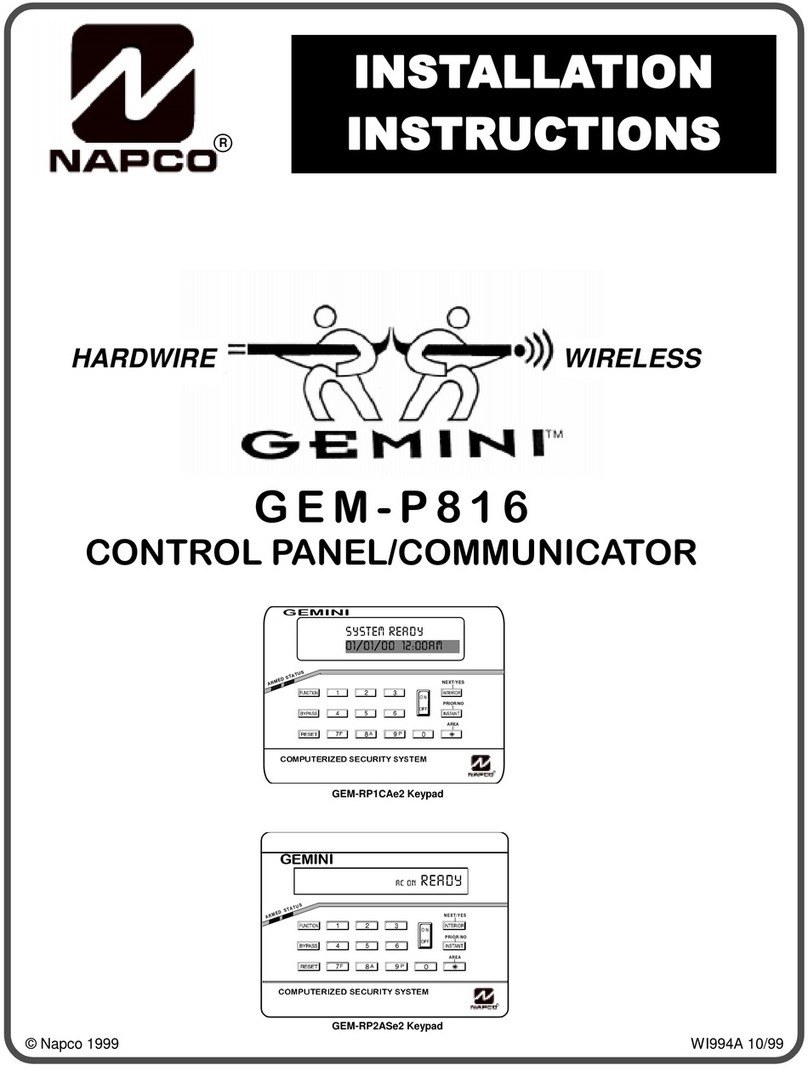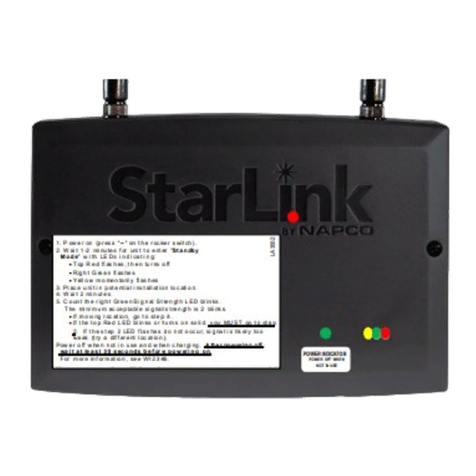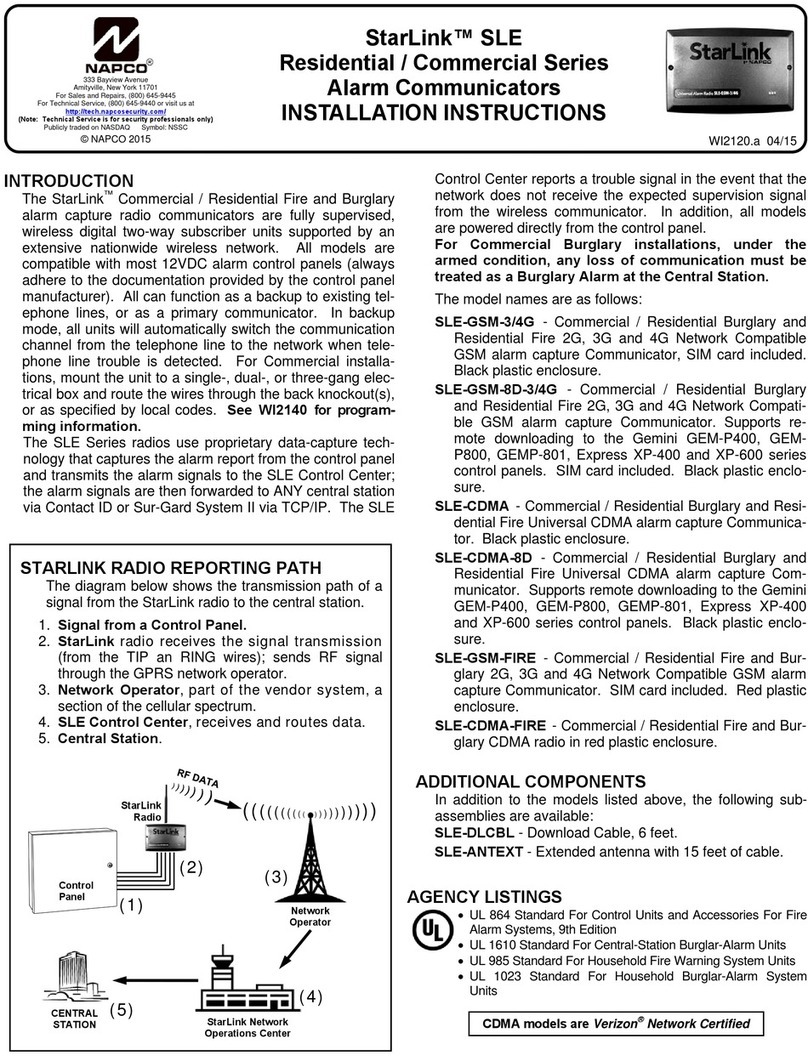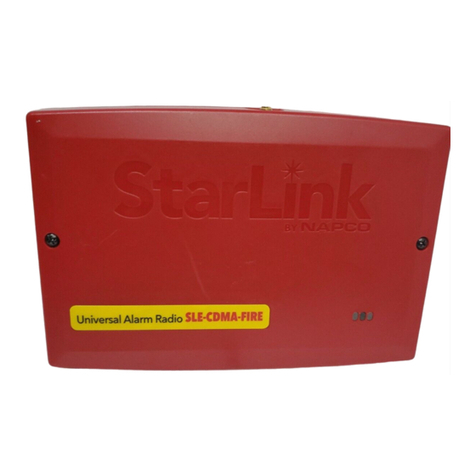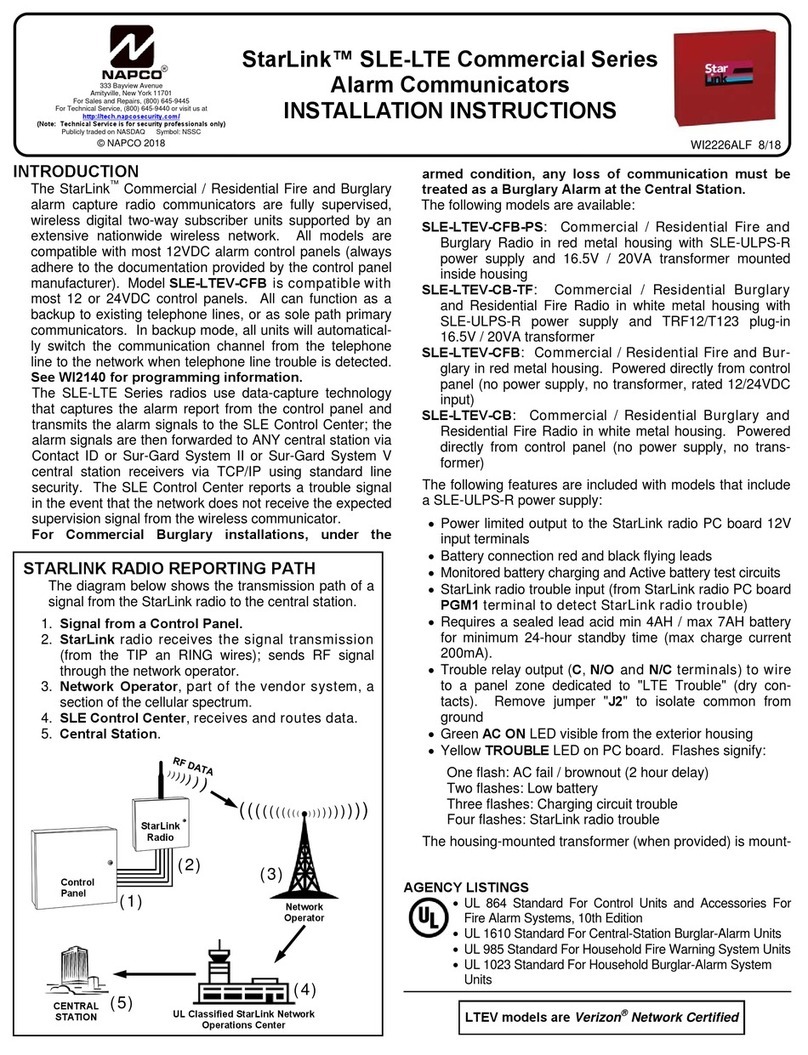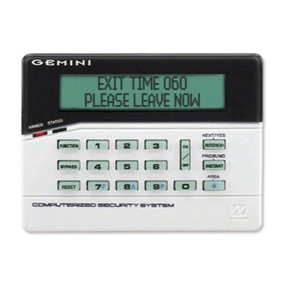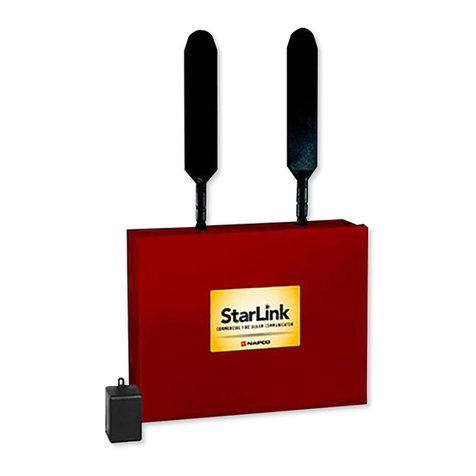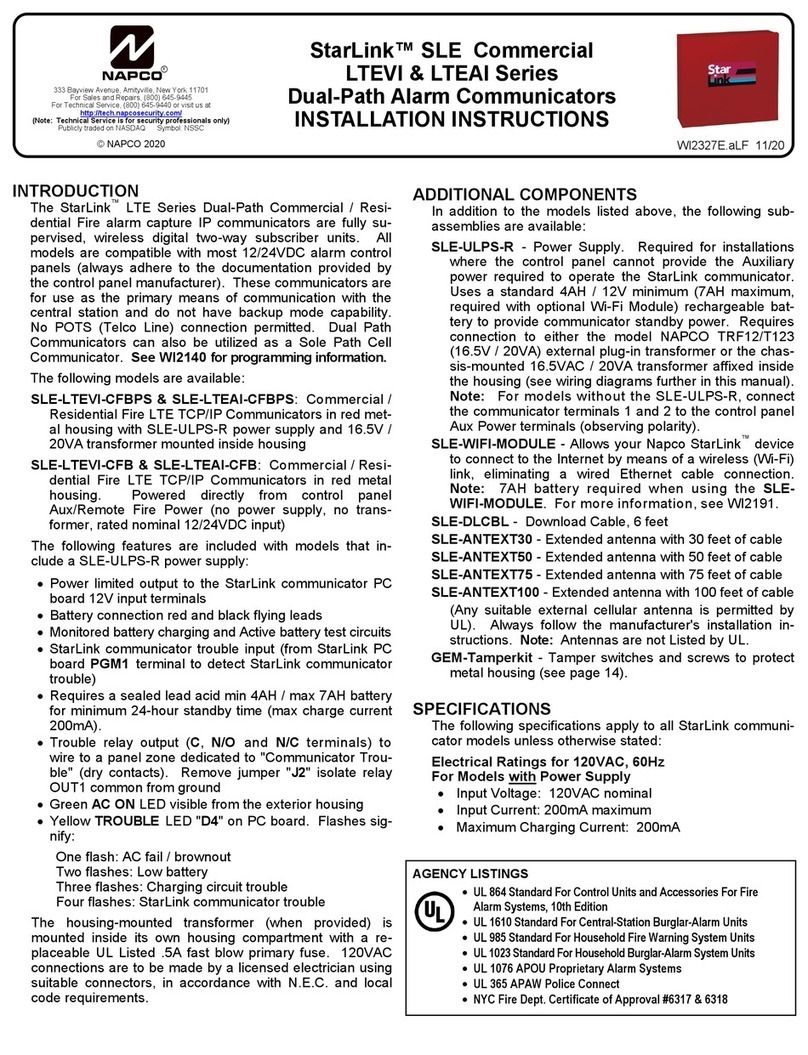
2 StarLink™SLE Series Alarm Communicators -- Installation Instructions
Electrical Ratings for the IN 1 Burg/Fire Input:
Input Voltage: 15-9VDC
Electrical Ratings for IN 2 and IN 3:
Maximum Loop Voltage: 15VDC
Maximum Loop Current: 1.2mA
End of Line Resistor (EOLR) Value: 10K
Electrical Ratings for 3 PGM Outputs:
Open Collector Outputs: Maximum Voltage 3V when ac-
tive; 15V maximum when not active
Maximum PGM Sink Current: 50mA
Physical (W x H x D)
Plastic Housing: 8 x 5-29/64 x 1½" (20.3 x 13.9 x 3.8cm)
Mounting: Plastic housing includes three keyhole slots for
triple gang boxes (see image at right and scale template on
page x);
Environmental
Operating Temperature: –10°C - 49°C (14°F - 120°F)
Humidity: Maximum 95% Non-Condensing
TERMINAL DESCRIPTIONS
Located at the bottom of the StarLink radio PC board, the
17 terminals are described as follows:
TB1: PWR (+12V)
(Refer to section "STEP 4: APPLY POWER")
TB2: PWR GND (–)
(Refer to section "STEP 4: APPLY POWER")
TB3: PGM1 (–): Open collector output. PGM1 is nor-
mally on (active low). When it is triggered (for ex-
ample, a trouble is detected) it becomes open col-
lector/high. To have a zone dedicated to an Star-
Link radio trouble, insert one side of the end of line
resistor into this PGM1 terminal, and wire the other
side of the resistor to the positive terminal of the
zone. The output can be re-configured to activate
on other conditions using the Management Center
screen (located at www.napconoc.com).
TB4: PGM2 (–): Open collector output. This output is
defaulted as "Fail to Communicate", and is normally
open collector/high. When a report fails to com-
municate, the output is active low. The output can
be re-configured to activate on other conditions us-
ing the Management Center screen (located at
www.napconoc.com).
TB5: PGM3 (–): Open collector output. This output is
defaulted as "Telephone Line Cut". When the 24V
telephone line voltage is correct, the output is open
collector/high; when the telephone line voltage is
too low, the output is active low. This output can be
re-configured using the Management Center screen
(located at www.napconoc.com).
TB6: IN 1 (B/F): Active high input intended for wiring
to the control panel bell output. When this input
detects a steady high, it sends a burglary alarm;
when it detects a pulsing temporal high, it sends a
Fire alarm; when it detects the "CO Alarm" pattern,
a CO alarm is sent. For this input to report to a cen-
tral station, the StarLink radio must be configured
with the central station telephone number and cor-
rect reporting formats and codes.
When used as arm/disarm status input, a high indi-
cates "armed" and a low indicates "disarmed".
Note: When using Napco Armed Lugs (E4 or
E15), do not use IN 1 for armed status; instead, use
IN 2 or IN 3.
TB7: IN 2: See TB9, below.
TB8: GND: Common ground terminal.
TB9: IN 3: Both terminals IN 2 and IN 3 are, by de-
fault, active low inputs. Use active low outputs to
activate. For these inputs to report to a central sta-
tion, the StarLink radio must be configured with the
Central station telephone number and correct re-
porting formats and codes. Jumpers 4 and 5 may
be used to make the IN 2 and IN 3 terminals super-
vised end of line resistor inputs that can be trig-
gered with N/O or N/C relay contacts. Wire the
common ground terminal GND (terminal TB8) to the
relay common. When used as arm/disarm status
input, a low indicates "armed" and a high indicates
"disarmed".
TB10: TIP: See TB11, below.
TB11: RING: Terminals TIP and RING: When used for
backup reporting, the street/cable-modem Tip and
Ring telephone wires must be routed from the out-
side to these terminals. These wires are monitored
for voltage such that if voltage falls below 1.5V, a
Telco Line Fault trouble is detected and the StarLink
radio switches over to apply its own Telco Line volt-
age to the control panel Tip and Ring, thus allowing
the StarLink radio to receive and transmit any
alarms sent by the control panel.
TB12: PANEL RING: See wiring diagrams.
TB13: PANEL TIP: See wiring diagrams.
TB14: RTS (R): See TB17 below.
TB15: PANEL TX (B): See TB17 below.
TB16: PANEL RX (G): See TB17 below.
TB17: CTS (Y): These terminals are wired to the SLE-
StarLink Plastic Housing Dimensions (inches)
8.0"
1-13/16"
3-5/8"
7-9/32"
5-29/64" 3-9/32" 3-9/32"
3-5/8"
1-13/16"

